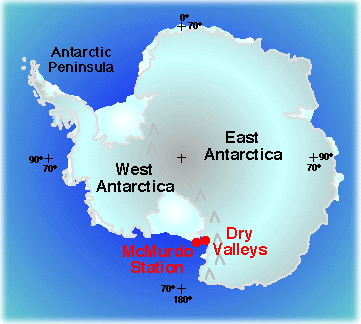
|


Earth's basic structure was formed by processes involving the crystallization of magma (molten rock). Operating on billion-year time scales, these processes have produced a wide diversity of rock types. In turn, these different elements comprise the continents and the ocean basins
Present day volcanism exemplifies this overall process of differentiation - so many different varieties of lava erupt - yet scientists have not been able to relate this diversity to the prolonged and detailed deep-Earth processes that undoubtedly generate it. Solidified bodies of magma (plutons) that were once deeply buried and are now exposed through erosion also furnish evidence, but most often how these plutons relate to the magmatic-volcanic system is not clear.
This research is pointed at this fundamental problem: We will examine magma crystallization processes by studies of sills from the Ferrar Group in Antarctica. These studies should expose the relationship of plutonism to volcanism and may provide some important insights on planetary magmatism. The Ferrar magmatic system of the McMurdo Dry Valleys, Antarctica (Ferrar-DV) exemplifies the emerging global paradigm. Magmatic sheets or sills occur in stacks, connected below to a deep-seated magmatic source and above to a volcanic center.
The world's major magmatic systems reveal this pattern, as they tend to occur at ocean ridges (e.g., Kilauea, Mt. Etna, Stillwater, and Rum, among many others). Only the Ferrar-DV, however, clearly reveals the critical physical and chemical connections between the deep, mush-dominated system and the near-surface, pre-eruptive sill system.
This project seeks to ascertain the full physical and chemical nature of the Ferrar-DV magmatic system, by:
|





